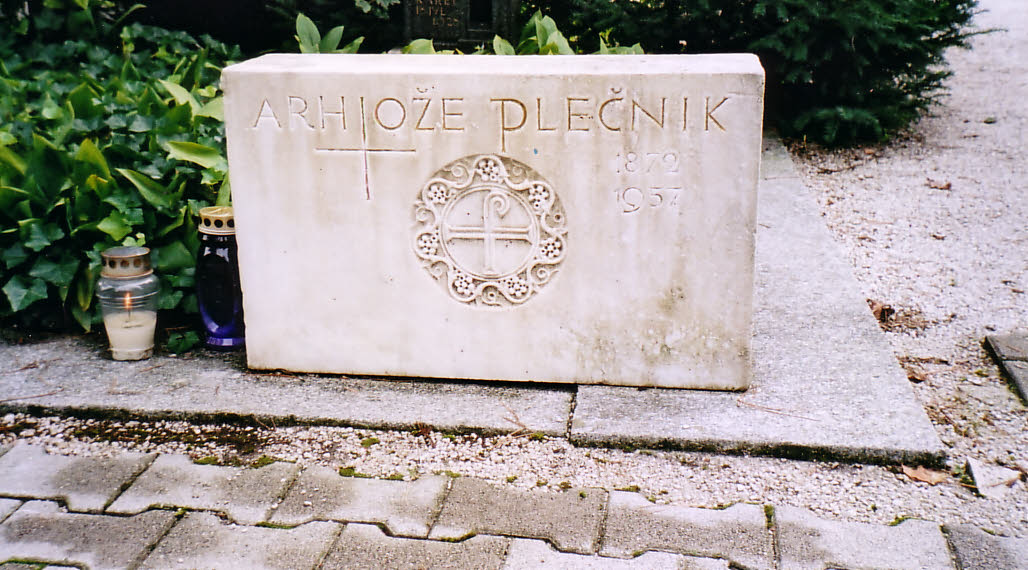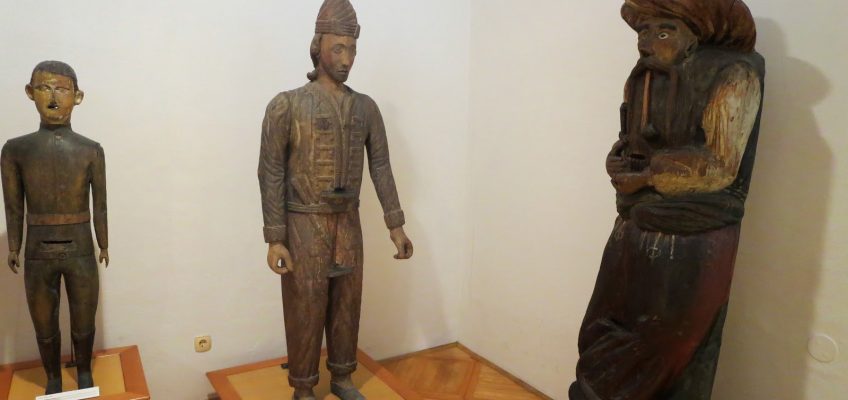It’s a struggle to identify a unifying theme of the day today. Ups and downs, as well as lefts and rights, probably is the best I can do. We made a wrong turn trying to get to the Plečnik cemetery, we got completely lost looking for the old town and the beekeeping museum in the small town of Radovljica, we went up and down over Vršič Pass, including making 50 hairpin turns, and we arrived in Kobarid after a day of overcast skies finally turned rainy, attempting to dampen our mood as well as everything else. But the ups of a day filled with glorious scenery, the steep climb through the mountains, the finally found and surprisingly enjoyable Museum of Apiculture, and the anticipation of a better weather day tomorrow win the theme wars.
So, what do you think this is?

Read on for the answer.
Plečnik Cemetery
After breakfast we checked out of our B&B and went to see the cemetery designed by Plečnik. The highlight was certainly the Garden of All Saints.

We wandered around the cemetery for a while. I wanted to find Plečnik’s grave, but was unable to locate it. Someone else did and posted it on Pinterest:

Museum of Apiculture
Our next stop was Radovljica, about 35 km northwest from Ljubljana, and just east of Bled. (We would have gone there yesterday, but it was late and we were too tired after walking around the lake.) Forgetting about the frustration of getting lost and wandering aimlessly all over town, only to discover we had actually driven right up to the edge of where we were trying to go, Radovljica has a small but lovely old town, and a superb little museum dedicated to the history, science, and art (yes art!) of beekeeping. It turns out the Carniolan honey bee (Apis mellifera carnica), which is native to the Julian Alps, makes great honey and has a docile nature, making them ideal for apiculture, and Slovenia is famous for and proud of this tradition.
My favorite part of the museum was the collection of hives (boxes used to raise the bees and collect the honey) and the frontal boards of the beehives, depicting religious, historical, mythological, and humorous subjects (including the one above of the devil sharpening a woman’s tongue). This museum has the largest collection of these frontal boards anywhere, and displays only a fraction of the entire holding.


Some of the hives are actual carved figures.

There was also a fascinating movie describing the life cycle of bees and how their colonies are organized.
My other favorite part of the museum was the curator, and charming woman who chatted enthusiastically about the exhibit, pointing out some of her favorite frontal boards. She and I really hit it off when I was able to bring up facts I’d read about Slovenian history based on my pre-travel research.
On the edge of Radlovljica’s old town is a gorgeous view point:

Vršič Pass
From there we drove west, where the road hugs the border with Austria, until we came to the town of Kranska Gora. Then we turned south and began the drive up and over Vršič Pass. The F word comes to mind again.







We arrived in Kobarid around 16:00 and are nestled in our apartment. The rain has suppressed cheerfulness in our travel party somewhat, and we went for a dinner of pizza eaten mostly in silence. Afterwards, I went for a walk around the town in the drizzle.
I think tomorrow will be very interesting. There is a lot of WWI history associated with this region, and the activities I have planned should bring that history into focus.
Here’s hoping the weather makes tomorrow another “up” day!


Leave a Reply